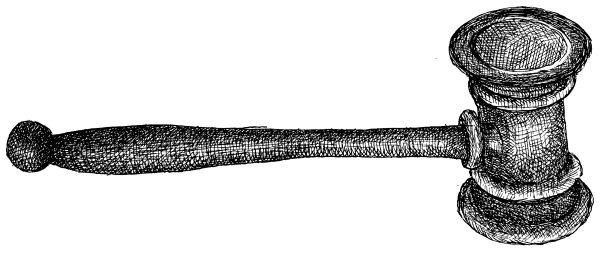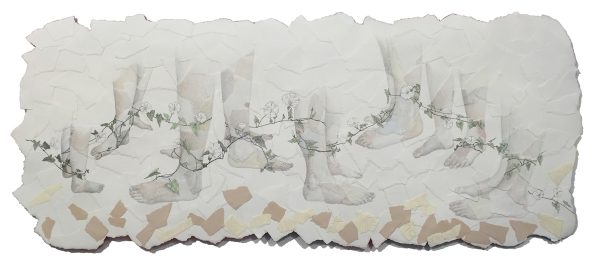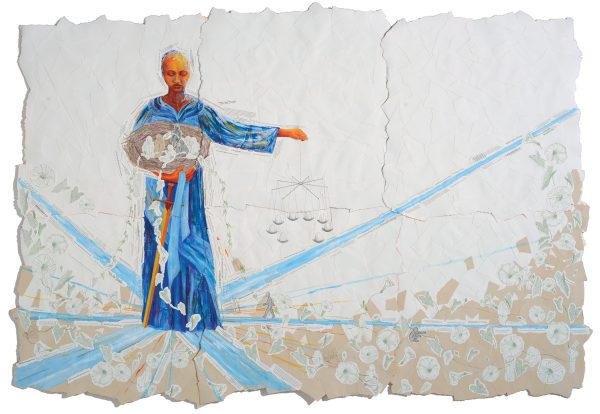Following is an article I wrote that is being featured in the third edition of The Conscious Lawyer, an online magazine developed by Elaine Quinn. The magazine is a worthy publication for anyone interested in or working in the justice system. Present and past issued can be viewed for free at their website: http://www.theconsciouslawyer.co.uk/
Here, also, is a pdf of the article as laid out in the magazine: The Human Shape of Justice
Last month, I was drawing a gavel. I was working in one of my favorite media, pen & ink, which for me means a dipping pen with a hair-breadth point, a small jar of India ink, and smooth sturdy paper. I put the pen straight to the page, without under-drawing or sketch, so every mark, true or mistaken, is there on the page in graphic black and white. Drawing in this way requires slow even breathing and a calm mind, with part of it tightly focused on the tiniest details of the linework, and another part allowed to roam freely, to think, in a somewhat detached manner that doesn’t disturb the carefulness of breath or intensity of the thread connecting mind and hand.

I was working on a project that called for drawings of objects that symbolize elements of our interior selves, our internalized motivations that influence our outer actions, what we hide from ourselves and project onto others.
I had developed my pen & ink technique by drawing plants and animals. This was the first project in which I was using it to depict everyday objects, and I was finding the gavel particularly challenging. As I struggled, I began to think about the gavel’s role in this art project and in our courts.
One might think, considering the gavel’s prominence in courtroom imagery, that I might use it to symbolize justice, but I did not. I chose it to represent condemnation. The gavel, and the resounding “wham!” when it strikes the block, does not fill one with a sense of light and truth in the way that the word “justice” can. It is a dark sound that carries the finality of judgment.
This rigid, tightly formed object was so demanding to draw. The two sides of the mallet must be perfectly round, perfectly even, and perfectly in perspective. The turned handle must be exactly perpendicular, with no waver of line, and precisely balanced. This is not how organic things are, the birds and leaves, stones and nests that have honed my skill. This is also not how people are, and justice is always about people. Yes, the gavel is a perfect symbol, not of justice, but of condemnation, over what in us is not precisely balanced, not exactly upright, not perfectly turned and smooth as lacquer.

Law is Love
Three years ago, I began a body of work about reshaping our justice system. I was preparing a solo show for a law library, to coincide with the 800th birthday of the Magna Carta. I had pitched the concept that a study of the document and its history through the ages revealed how interpretation of its meaning had evolved over time. I planned to create work sharing how I, as a citizen, would like it to develop next. I had ideas but had not yet begun the work.
Then the thought that ultimately shaped the show, “Law is Love,” came to mind. I thought I would be shamefully naïve were I to develop it, and quickly put it out of mind. However a chance encounter with Peter Gabel’s book, Another Way of Seeing showed me that someone with the well-developed law background that I lacked, was already working on just that, and there were others, too. I arranged a meeting with Gabel, who pointed me towards restorative justice, a critical concept for skeptical me, who wanted to know just how Law is Love could possibly work with the real-world needs of our justice system. What I’ve since come to understand is that love is not simply a possible alternative approach to justice, but rather it is the only way to create an outcome that is actually just.
Creating a justice system based on love moves us away from the rigidity of the precisely turned gavel, because love cannot seek to force a form on people that they do not have. Instead, it charges our system with protecting and our humanity, integrity, and relationship to each other. I’ve made an attempt at writing a framework for this in the conceptual piece, You Have the Right to Remain Human. It revises the U.S. Miranda Warning, which was derived from the Fifth Amendment, which in turn was derived from the Magna Carta.

When the “Remain Human” text refers to connection to others, being heard, and committing to reparations, it is stressing a crucial aspect of justice that is often ignored, even eschewed, by our present system: that of relationship. People’s lives are defined through their relationships with each other. An injustice is a disturbance in relationship between members of society. A contract dispute is a disagreement about the nature of a specific relationship. A personal crime damages or destroys some aspect of the victim’s ability to be in open, safe, or productive relationships with others. A statutory crime can put members of the public at risk of injury or death. Even a property crime causes the victim to divert resources to the restoration of property that would otherwise be spent on their prior concerns and motivations, which are relational. Through dealing with physical or psychological pain or diverting resources, injury rearranges the victim’s relationship to family, friends, intimates, coworkers, neighbors, professional contacts, and any social structures in which the victim may be involved.
As for the person at fault, their transgression too, comes down to relationship. This person has an unhealthy or damaged way of relating to others. Possibly they have been a victim first, or there is a medical cause, or there is an aspect of their ability to understand, respect, and love others that is underdeveloped. In any case the cause must be uncovered in order to stop it from being continually paid forward.

There is an aspen grove in Utah, called Pando, which is Latin for “I spread.” It contains approximately 47,000 trunks from a single root system and is considered by some to be the largest single living organism. Suppose we understand ourselves to be similarly connected to each other. If so, it is essential that we have a justice system can treat each of the citizens under its care as a component of a single being, fully connected with all others, each woven into the other whether in injury or in health.
I suspect that our present justice system is reflective of the composite public expectation of what “Justice” means. Presently, to many people’s way of thinking, justice involves punishment, repaying harm for harm. When someone speaks of seeking justice, it typically is understood as seeking punishment for the offender and perhaps also restitution for the victim. It is not typically a statement about healing relationships.
Presently many of our courthouses display an icon of Lady Justice that favors retribution. Her scales pit two sides against each other, conjuring corrosive argument and win-or-lose thinking. She is blindfolded rather than seeing truth or expressing compassion. She cuts down and casts out the guilty, ignoring that they, too, are our children. Changing our cultural image of Lady Justice is one important step in redirecting our collective vision from punishment toward restoration.

It’s common to seek change in democratic society through government policy. But the change must take place first in individual citizens, and when that reaches a certain threshold, a policy change can, indeed must, follow. In order to build a justice system that is restorative, and not retributive, one based love and relationship and not fear and punishment, the appeal absolutely must go to the people. Changes can be introduced in law classrooms and pilot programs, but the greatest value in these changes is in the people they speak to, individuals touched who naturally are in relation to others, who in turn spread the changed mentality. The overall system will adjust as the public begins to hold restoration and relationship as sacred truths about justice, displacing the role of punishment and retribution.

No societal problem, including this one, is a matter of getting the right leaders in place with the right policies to address all the concerns. We need to build out our solutions the way we’ve built out the internet: individuals making personal contributions based on one’s unique skills, experience, needs, and personality. What is your own role in this? It may be in how you teach, what you share with your children, what you write, what you publish, what you put on social media, what you paint, what you stand up to say at the town hall meeting, what you show up for and what you don’t.
There is a quote by Antoine de Saint-Exupéry: “If you want to build a ship, don’t herd people together to collect wood and don’t assign them tasks and work but rather teach them to long for the endless immensity of the sea.”
We cannot leave change to some other person in authority. Instead, we must walk side by side with what may appear to be chaos. It isn’t chaos though. It seems that way because the order is far too big for us to hold, the web of connections far too intertwined for us to follow. This is the beautiful organic shape of this world. This is our human selves responding to the many glimmering, glowing visions that lead us. Let one of them be this, “Law is Love.”
Share:
